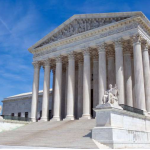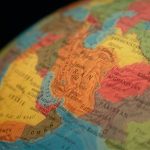The bombers’ arrival for joint drills signals deterrence toward China and North Korea, despite local backlash after one aircraft’s emergency landing disrupted civil flights.
Last week, the Japan Air Self-Defense Force (JSDF) shared an image of a pair of its Lockheed Martin F-35A Lightning II fifth-generation stealth fighters escorting two United States Air Force Rockwell B-1B Lancer long-range strategic bombers. Multiple photos were posted online following the bilateral exercise in the island nation’s airspace.
“This bilateral exercise reaffirms the strong intention between Japan and the United States not to tolerate unilateral changes to the status quo by force, the readiness of JSDF and U.S. Armed Forces, and further strengthens the deterrence and response capabilities of the Japan-U.S. Alliance,” the JSDF announced in a joint staff press release.
Misawa Air Base further shared the images on Facebook with the caption, “The Japan Air Self-Defense Force joined forces with the 9th Expeditionary Bomb Squadron for Bomber Task Force joint integration training—enhancing interoperability and demonstrating our united commitment to regional stability and global security.”
In late April, two U.S. Air Force B-1B Lancer long-range strategic bombers from the 9th Expeditionary Bomb Squadron at Dyess Air Force Base (AFB), Texas, were deployed to Japan as part of the first rotational Bomber Task Force (BTF) mission to the Asian nation. BTF 25-2 is expected to last around six weeks, during which time the Cold War-era bombers will likely conduct training exercises with allies and regional partners.
Despite a B-1B Emergency Landing, the Exercise Was a Success
Though both the JSDF and the U.S. Air Force have highlighted the successful bilateral exercise, the deployment of the B-1B Lancers to Misawa Air Base hasn’t been without controversy.
Just a week after arriving in Japan, one of the B-1 Lancers was forced to make an emergency landing at the base, which forced the closure of a shared runway with the Misawa Airport and required that a commercial flight return to Tokyo’s Haneda Airport with 200 passengers onboard, while other commercial flights were canceled.
As previously reported, that resulted in a “sharp rebuke from local officials.”
“The B-1B paused on the runway as a precautionary measure to allow first responders to inspect the aircraft before clearing it to taxi off the runway,” Captain Leeroy Stark, spokesperson for the 35th Fighter Wing at Misawa Air Base, told Stars and Stripes following the incident.
Officials from Misawa city and the Aomori prefecture have expressed concern about deploying the U.S. Air Force bombers at the base.
“We believe that the incident caused anxiety among the people of the prefecture, where Misawa Air Base is located. We deeply regret that it occurred despite our request for civil stability and safety measures made on April 18,” the Aomori prefectural government wrote in a letter, noting the day the B-1B bombers arrived in Japan.
As noted, this was the first BTF deployment to Japan, but it was likely carried out to send a strong message of deterrence to North Korea and China. Misawa Air Base is just 810 miles from the North Korean capital of Pyongyang and approximately 1,300 miles from Beijing. The United States Air Force operates forty-five of the supersonic B-1B Lancers, but it is unclear if Japan can expect to see additional BTF deployments involving the Lancers.
The bombers are on track to be replaced by the Northrop Grumman B-21 Raider by the decade’s end.
About the Author: Peter Suciu
Peter Suciu has contributed over 3,200 published pieces to more than four dozen magazines and websites over a thirty-year career in journalism. He regularly writes about military hardware, firearms history, cybersecurity, politics, and international affairs. Peter is also a Contributing Writer for Forbes and Clearance Jobs. He is based in Michigan. You can follow him on Twitter: @PeterSuciu. You can email the author: [email protected].
Image Credit: Wikimedia Commons/ Staff Sgt. Peter Reft.















